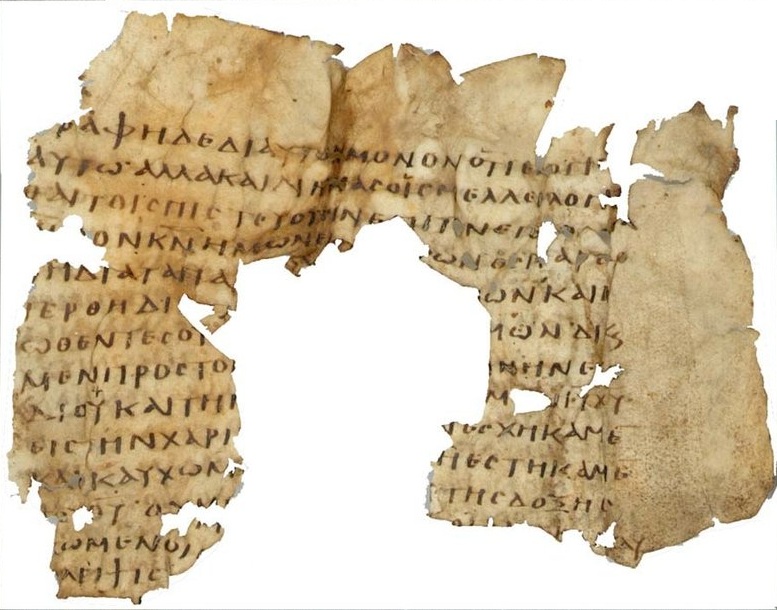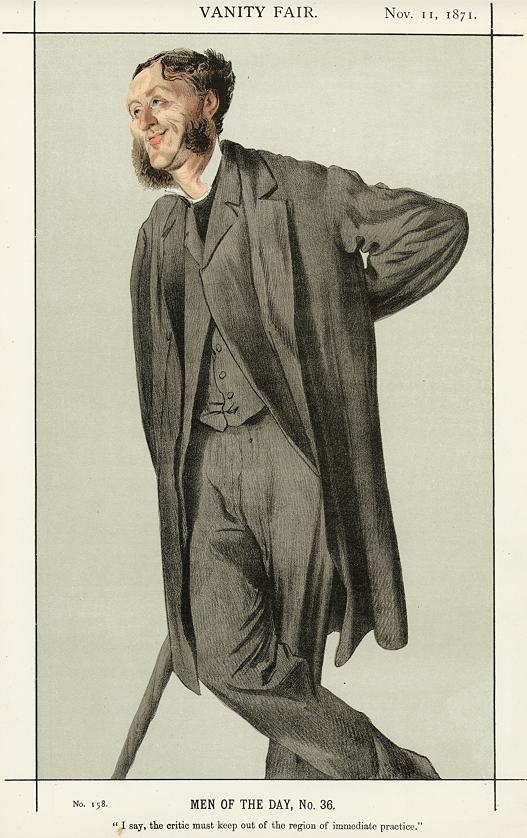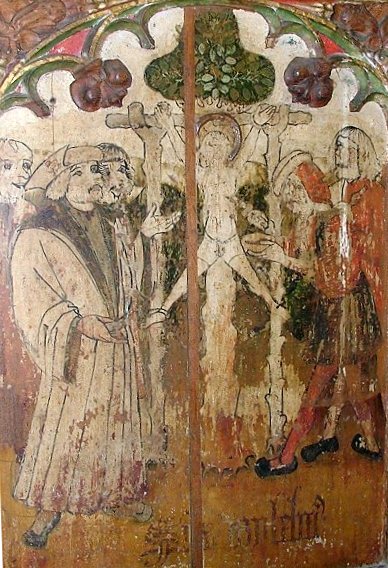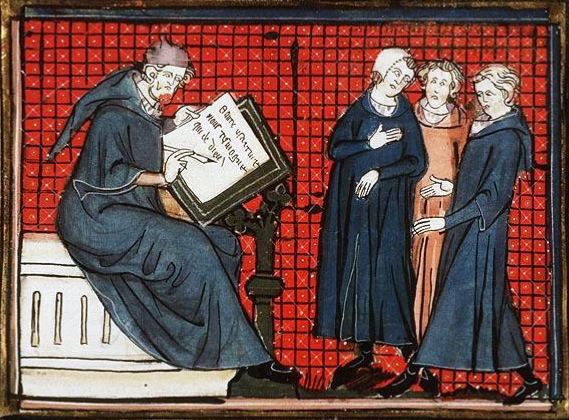|
The Prioress' Prologue And Tale
"The Prioress's Tale" ( enm, The Prioresses Tale) follows "The Shipman's Tale" in Geoffrey Chaucer's ''The Canterbury Tales''. Because of fragmentation of the manuscripts, it is impossible to tell where it comes in ordinal sequence, but it is second in group B2, followed by Chaucer's "Tale of Sir Topas". The General Prologue names the prioress as Madame Eglantine, and describes her impeccable table manners and soft-hearted ways. Her portrait suggests she is likely in religious life as a means of social advancement, given her aristocratic manners and mispronounced French. She maintains a secular lifestyle, including keeping lap dogs that she privileges over people, a fancy rosary and a brooch inscribed with ('Love Conquers All'). Her story is of a child martyr killed by Jews, a common theme in Medieval Christianity, and much later criticism focuses on the tale's antisemitism. Plot The story is introduced with an invocation to the Virgin Mary, then sets the scene in Asia, wher ... [...More Info...] [...Related Items...] OR: [Wikipedia] [Google] [Baidu] |
Ghetto
A ghetto, often called ''the'' ghetto, is a part of a city in which members of a minority group live, especially as a result of political, social, legal, environmental or economic pressure. Ghettos are often known for being more impoverished than other areas of the city. Versions of the ghetto appear across the world, each with their own names, classifications, and groupings of people. The term was originally used for the Venetian Ghetto in Venice, Italy, as early as 1516, to describe the part of the city where Jewish people were restricted to live and thus segregated from other people. However, early societies may have formed their own versions of the same structure; words resembling ''ghetto'' in meaning appear in Hebrew, Yiddish, Italian, Germanic, Old French, and Latin. During the Holocaust, more than 1,000 Nazi ghettos were established to hold Jewish populations, with the goal of exploiting and killing the Jews as part of the Final Solution. [...More Info...] [...Related Items...] OR: [Wikipedia] [Google] [Baidu] |
Martyrdom
A martyr (, ''mártys'', "witness", or , ''marturia'', stem , ''martyr-'') is someone who suffers persecution and death for advocating, renouncing, or refusing to renounce or advocate, a religious belief or other cause as demanded by an external party. In the martyrdom narrative of the remembering community, this refusal to comply with the presented demands results in the punishment or execution of an actor by an alleged oppressor. Accordingly, the status of the 'martyr' can be considered a posthumous title as a reward for those who are considered worthy of the concept of martyrdom by the living, regardless of any attempts by the deceased to control how they will be remembered in advance. Insofar, the martyr is a relational figure of a society's boundary work that is produced by collective memory. Originally applied only to those who suffered for their religious beliefs, the term has come to be used in connection with people killed for a political cause. Most martyrs are conside ... [...More Info...] [...Related Items...] OR: [Wikipedia] [Google] [Baidu] |
Epistle To The Romans
The Epistle to the Romans is the sixth book in the New Testament, and the longest of the thirteen Pauline epistles. Biblical scholars agree that it was composed by Paul the Apostle to explain that salvation is offered through the gospel of Jesus Christ. Romans was likely written while Paul was staying in the house of Gaius in Corinth. The epistle was probably transcribed by Paul's amanuensis Tertius and is dated AD late 55 to early 57. Consisting of 16 chapters, versions with only the first 14 or 15 chapters circulated early. Some of these recensions lacked all reference to the original audience of Christians in Rome making it very general in nature. Other textual variants include subscripts explicitly mentioning Corinth as the place of composition and name Phoebe, a deacon of the church in Cenchreae, as the messenger who took the epistle to Rome. Prior to composing the epistle, Paul had evangelized the areas surrounding the Aegean Sea and was eager to take the gospel fa ... [...More Info...] [...Related Items...] OR: [Wikipedia] [Google] [Baidu] |
Circumcised
Circumcision is a surgical procedure, procedure that removes the foreskin from the human penis. In the most common form of the operation, the foreskin is extended with forceps, then a circumcision device may be placed, after which the foreskin is wikt:excise, excised. Topical or locally injected anesthesia is generally used to reduce pain and stress (physiology), physiologic stress. It is usually elective surgery, elective, performed as preventive healthcare, a Religious law, religious rite, or Culture, cultural practice. It is also an option for cases of phimosis, other Pathology, pathologies that do not resolve with other treatments, and chronic urinary tract infections (UTIs). The procedure is contraindicated in cases of certain genital structure abnormalities or poor general health. Circumcision is associated with reduced rates of sexually transmitted infections and urinary tract infections. This includes decreasing the incidence of Carcinogenesis, cancer-causing forms of ... [...More Info...] [...Related Items...] OR: [Wikipedia] [Google] [Baidu] |
The Pardoner's Prologue And Tale
"The Pardoner's Tale" is one of ''The Canterbury Tales'' by Geoffrey Chaucer. In the order of the Tales, it comes after The Physician's Tale and before The Shipman's Tale; it is prompted by the Host's desire to hear something positive after the physician's depressing tale. The Pardoner initiates his Prologue—briefly accounting his methods of swindling people—and then proceeds to tell a moral tale. The tale itself is an extended exemplum. Setting out to kill Death, three young men encounter an Old Man who says they will find him under a nearby tree. When they arrive they discover a hoard of treasure and decide to stay with it until nightfall and carry it away under the cover of night. Out of greed, they murder one another. The tale and prologue are primarily concerned with what the Pardoner says is his "theme": ''Radix malorum est cupiditas'' ("Greed is the root of llevils"). Frame In the order of ''The Canterbury Tales'', the Pardoner's Prologue and Tale are preceded b ... [...More Info...] [...Related Items...] OR: [Wikipedia] [Google] [Baidu] |
Matthew Arnold
Matthew Arnold (24 December 1822 – 15 April 1888) was an English poet and cultural critic who worked as an inspector of schools. He was the son of Thomas Arnold, the celebrated headmaster of Rugby School, and brother to both Tom Arnold, literary professor, and William Delafield Arnold, novelist and colonial administrator. Matthew Arnold has been characterised as a sage writer, a type of writer who chastises and instructs the reader on contemporary social issues. He was also an inspector of schools for thirty-five years, and supported the concept of state-regulated secondary education. Early years He was the eldest son of Thomas Arnold and his wife Mary Penrose Arnold (1791–1873), born on 24 December 1822 at Laleham-on-Thames, Middlesex. John Keble stood as godfather to Matthew. In 1828, Thomas Arnold was appointed Headmaster of Rugby School, where the family took up residence, that year. From 1831, Arnold was tutored by his clerical uncle, John Buckland, in Laleham. In ... [...More Info...] [...Related Items...] OR: [Wikipedia] [Google] [Baidu] |
William Of Norwich
William of Norwich (2 February 1132 – 22 March 1144) was an English boy whose disappearance and killing was, at the time, attributed to the Jewish community of Norwich. It is the first known medieval accusation against Jews of ritual murder. William was an apprentice tanner who regularly came into contact with Jews and visited their homes as part of his trade. His murder remains unsolved; the local community of Norwich attributed the boy's death to the Jews, though the local authorities would not convict them for lack of proof. William was acclaimed as a saint in Norwich, with miracles attributed to him. William's story was told in ''The Life and Miracles of St William of Norwich'', a multi-volume Latin work by Thomas of Monmouth, a monk in the Norwich Benedictine monastery. Thomas started ''The Life'' in 1149/50; he completed volume seven by 1173. Augustus Jessopp (1823–1914), one of the editors of the first printed edition of Thomas' work, describes Thomas as belongin ... [...More Info...] [...Related Items...] OR: [Wikipedia] [Google] [Baidu] |
Gautier De Coincy
Gautier de Coincy (1177–1236) was a French abbot, trouvère and musical arranger, chiefly known for his devotion to the Virgin Mary. While he served as prior of Vic-sur-Aisne he compiled ''Les Miracles de Nostre-Dame'' (known in English as ''The Miracles of Notre Dame'' or ''The Miracles of Our Lady'') in which he set poems in praise of the Virgin Mary to popular melodies and songs of his day. It is a reverential but humorous work, full of love for the cult of the Virgin Mary, which at that time also received attention from Saint Bernard of Clairvaux who was the leading medieval proponent of veneration of the Virgin as a counterbalance to the more rigorous Christian scholasticism, then the dominating spiritual force. Unlike Clairvaux's more sombre tomes, de Coincy's book (whilst sharing much of the same ideological bedrock) tends more towards the indulgent or soft-hearted. Many of the songs de Coincy wrote were set to popular ballads then in vogue at the royal court, or borrow ... [...More Info...] [...Related Items...] OR: [Wikipedia] [Google] [Baidu] |
Little Saint Hugh Of Lincoln
Hugh of Lincoln (1246 – 27 August 1255) was an English boy whose death in Lincoln was falsely attributed to Jews. He is sometimes known as Little Saint Hugh or Little Sir Hugh to distinguish him from the adult saint, Hugh of Lincoln (died 1200). The boy Hugh was never formally canonised, so "Little Saint Hugh" is a misnomer. Hugh became one of the best known of the blood libel 'saints'; generally children whose deaths were interpreted as Jewish human sacrifices. It is believed by some historians that the church authorities of Lincoln steered events in order to establish a profitable flow of pilgrims to the shrine of a martyr and saint. Hugh's death is significant because it was the first time that the Crown gave credence to ritual child murder allegations, through the direct intervention of King Henry III. As a result, in contrast to other English blood libels, the story entered the historical record, medieval literature and in ballads that circulated until the twentieth ce ... [...More Info...] [...Related Items...] OR: [Wikipedia] [Google] [Baidu] |
Marian Apparition
A Marian apparition is a reported supernatural appearance by Mary, the mother of Jesus, or a series of related such appearances during a period of time. In the Catholic Church, in order for a reported appearance to be classified as a Marian apparition, the person or persons who claim to see Mary (the "seers") must claim that they see her visually located in their environment. If the person claims to hear Mary but not see her, this is known as an interior locution, not an apparition. Also excluded from the category of apparitions are dreams, visions experienced in the imagination, the claimed perception of Mary in ordinarily-explainable natural phenomena, and miracles associated with Marian artwork, such as weeping statues. Believers consider such apparitions to be real and objective interventions of divine power, rather than subjective experiences generated by the perceiving individuals, even in cases where the apparition is reportedly seen by only some, not all, of the people ... [...More Info...] [...Related Items...] OR: [Wikipedia] [Google] [Baidu] |
Abbot
Abbot is an ecclesiastical title given to the male head of a monastery in various Western religious traditions, including Christianity. The office may also be given as an honorary title to a clergyman who is not the head of a monastery. The female equivalent is abbess. Origins The title had its origin in the monasteries of Egypt and Syria, spread through the eastern Mediterranean, and soon became accepted generally in all languages as the designation of the head of a monastery. The word is derived from the Aramaic ' meaning "father" or ', meaning "my father" (it still has this meaning in contemporary Hebrew: אבא and Aramaic: ܐܒܐ) In the Septuagint, it was written as "abbas". At first it was employed as a respectful title for any monk, but it was soon restricted by canon law to certain priestly superiors. At times it was applied to various priests, e.g. at the court of the Frankish monarchy the ' ("of the palace"') and ' ("of the camp") were chaplains to the Merovingian and ... [...More Info...] [...Related Items...] OR: [Wikipedia] [Google] [Baidu] |

_Panorama.jpg)









